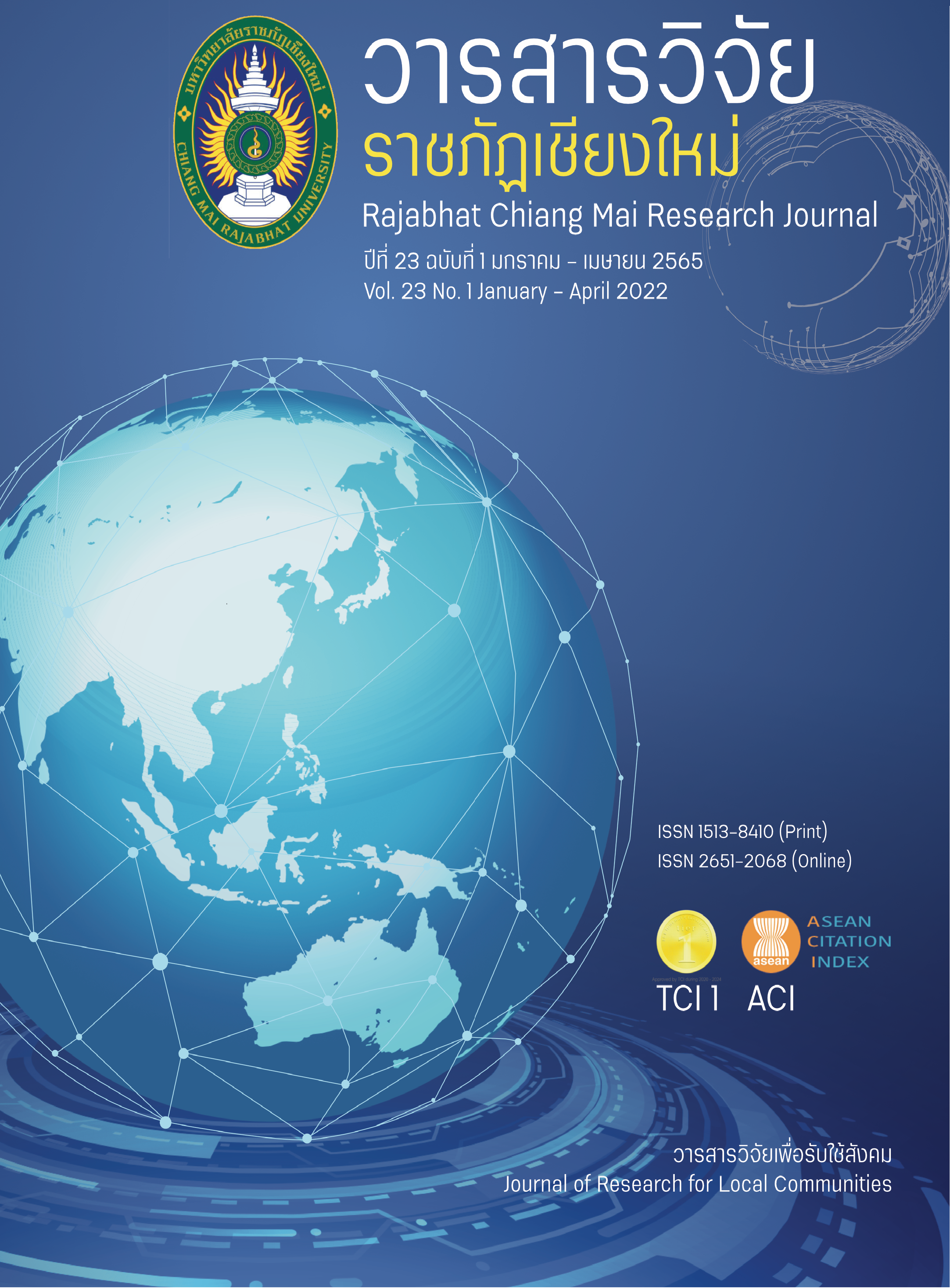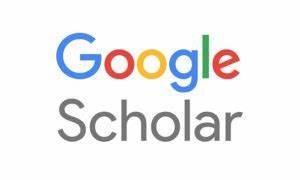Driving the Philosophy of the Sufficiency Economy to Basic Education In Chiang Mai Primary education Area 3 Chiang Mai
-
DOI:
https://doi.org/10.14456/rcmrj.2022.245497Keywords:
Driving Philosophy of Sufficiency EconomyAbstract
The objectives of this action research were to 1) drive the Sufficiency Economy Philosophy to administration of basic educational schools in Chiang Mai Primary Educational Service Area 3, 2) to investigate the results of the drive in the participating schools in the study area, and 3) to construct a policy-wise proposal of the drive. The target group comprised 141 individuals. The research instruments were composed of a documentary analysis, a brainstorming guideline, an observation, and a job performance assessment. The Item-Objective Congruence (IOC) was used to assess the research instruments by experts and the Cronbach’s Alpha Coefficient was applied to test the reliability of the test and the questionnaire. The quantitative data were statistically analyzed for percentage, mean, and standard deviation. The content analysis was adopted to analyze the qualitative data and the results were presented descriptively. The research results are summarized as follows.
1. The drive to incorporate the philosophy into the administration of the primary educational schools in the study area consisted of ten activities as follows: a documentary analysis and brainstorming to investigate problems, contexts and needs to drive the philosophy into the schools; planning to drive the philosophy; conducting a workshop to revise the annual operation plans; conducting a workshop to construct a Sufficiency Economy Philosophy-incorporated learners’ development program; conducting a workshop to design Sufficiency Economy Philosophy-incorporated leaning management plans and learning units; supervising and following up the workshops; verifying the quality of learning management plans and units as well as learners’ development activity learning management plans; implementing Sufficiency Economy Philosophy-incorporated learning activities; monitoring the drive of the philosophy; and conducting a workshop to reflect the operation results to school administrators, teachers, parents, and school board members.
2. Results of the drive revealed that the operations in general were at a high level. When the aspects were taken into consideration, it was found that all aspects of the operations were at a high level. The aspects with the highest mean were school administration, outcome/success image, and curriculum and learning activity organization respectively. The aspect with the lowest mean was learners’ development activity organization. The schools with evident development results were Ban Wang Jom being assessed as a Sufficiency Economy Learning Center, and Ban Pang Mayao having two research projects, namely, an academic administration guideline based on the Sufficiency Economy Philosophy and the management of the ethnic group learning resource of the school.
3. The policy-wise proposal to drive the philosophy into primary educational schools should include learners’ development, curriculum development, instructional management, internal environmental and atmosphere management, school management, parents’ participation, and educational management assessment and monitoring.
Downloads
References
Basic Education Committee, Office of the Basic Education Commission. (2017). Basic school administration guide. Bangkok: Religious Printing Factory. (in Thai)
Ministry of Education. Educational institution. (2009). Model for teaching and learning process management and management according to Philosophy of sufficiency economy "Sufficiency Education Institute 2009". Ministry of Education Announcement. (in Thai)
Muenjaem, S. (2019). Driving the Philosophy of the Sufficiency Economy to Basic School in Ban Wangoom Community School Chiiangao Dao District Chiang Mai Province. Rajabhat Chiang Mai Research Journal, 20(1), 57-69. (in Thai)
Office of Policy and Strategy. (2007). Driving sufficiency economy philosophy to educational institutions, Office of Permanent Secretary: Ministry of Education. Bangkok. (in Thai)
Tantivejkul, S. (2007). Life in sufficiency economy according to the royal initiative. Matichon, Bangkok. (in Thai)
Dharmapiya, P. (2015). Sufficiency Economy Philosophy and Education Management. Project to Support the Sufficient Economy. The Crown Property Bureau, Bangkok. (in Thai)
Hajaturat, S. (2018). Driving The Philosophy of Sufficiency Economy into Basic Education Ban Mae O Nai School, Chiang Dao District, Chiang Mai Province. Rajabhat Chiang Mai Research Journal, 19(2), 63-73. (in Thai)
Thamthasananon, S. (2017). School Based Management for Local Development of School in Maha Sarakham Provincial Administrative Organization. Buabundit Journal of Educational Administration (Buajead), 17(3), 41-52. (in Thai)
Wichaakkharawit, C. (2012). Model of Basic School Administration Based on the Philosophy of Sufficiency Economy. Rajabhat Chiang Mai Research Journal, 13(2), 71-88. (in Thai)
Wichaakkharawit, C. (2017). Model of learning Management based on the Philosophy of Sufficiency Economy In Schools for Basic Education in Chiang Mai province. Buabundit Journal of Educational Administration (Buajead), 17(2), 167-176. (in Thai)
Downloads
Published
How to Cite
Issue
Section
License
Copyright (c) 2022 Rajabhat Chiang Mai Research Journal

This work is licensed under a Creative Commons Attribution-NonCommercial-NoDerivatives 4.0 International License.
1. Articles, information, content, images, etc published in the “Community and Social Development Journal” are copyrighted by the Community and Social Development Journal, Chiang Mai Rajabhat University. In order to properly distribute the articles through print and electronic media, the authors still hold the copyright for the published articles under the Creative Commons Attribution (CC BY) license, which allows the re-distribution of the articles in other sources. References must be made to the articles in the journal. The authors are responsible for requesting permission to reproduce copyrighted content from other sources.
2. The content of the articles appearing in the journal is the direct responsibility of the article authors. The editorial board of the journal does not necessarily agree with or share any responsibility.














